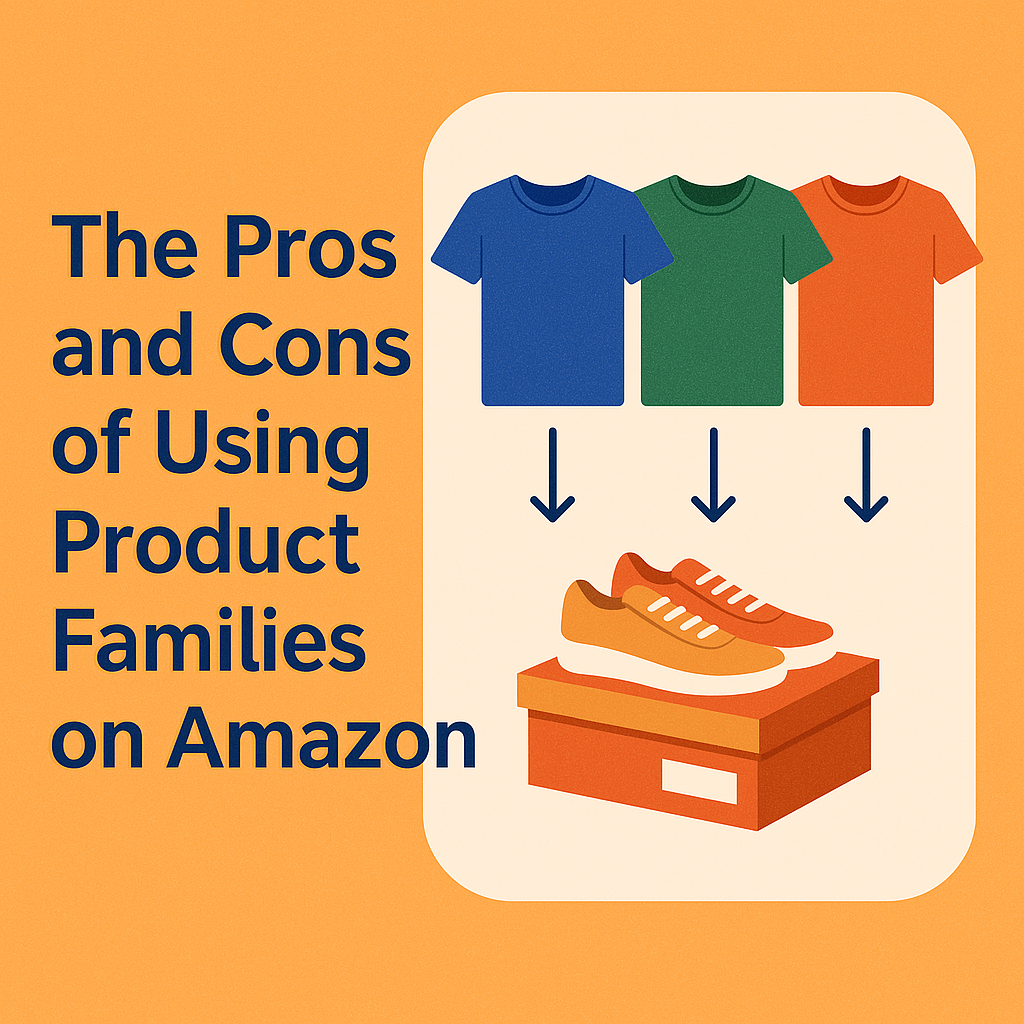Mastering Product Families and Parenting on Amazon: Strategies for Seller and Vendor Central
When it comes to listing and merchandising products on Amazon, the structure of your catalog can have a major impact on performance. One of the most powerful tools available to both Seller Central and Vendor Central sellers is the concept of product families and parenting. But when should you use them, and when might you be better off keeping listings separate?
In this post, we’ll dive into the pros and cons of utilizing product families (also known as parent-child ASIN relationships), explore how they play into different selling strategies, and help you determine the best approach for your catalog.
What Are Product Families (Parent-Child Relationships)?
A product family on Amazon is created when multiple related SKUs (child ASINs) are grouped under a single parent ASIN. This is commonly used for products that are essentially the same but vary in a specific attribute, such as size, color, flavor, or style.
Examples:
- A t-shirt available in different sizes and colors
- A supplement available in 30-count, 60-count, and 90-count bottles
- A laptop case available for different laptop sizes
When correctly implemented, this creates a single product detail page where customers can view and select from all available variations.
Pros of Using Product Families
- Consolidated Reviews
- All variations share reviews, which can help new variations build credibility faster.
- Improved Discoverability
- Better keyword performance since all variations contribute to the same page ranking.
- Enhanced Customer Experience
- Shoppers can compare options easily without navigating away from the product page.
- Cross-Selling and Upselling Opportunities
- Encourages customers to consider alternative sizes/colors, increasing conversion rate.
- Catalog Organization
- Cleaner and more manageable catalog, especially for large product lines.
- Optimized Digital Shelf Space (in some cases)
- Grouping products can help consolidate traffic and improve conversion rates on a single high-performing page.
Cons of Using Product Families
- Sales Attribution Can Be Muddled
- Harder to analyze performance of individual SKUs when they’re grouped under one page.
- Price Confusion
- If child products have drastically different pricing, it can confuse or deter customers.
- Suppressed Listings Risk
- Improper variation relationships can lead to listing suppression or retail readiness issues.
- Limited Creative Control
- All child products must share the same title and bullet structure under most conditions, reducing flexibility.
- Reduced Digital Shelf Space
- Combining variations under one parent ASIN means fewer distinct listings in search results, potentially reducing your brand’s footprint and visibility.
Selling Strategies and When to Use Product Families
Product family decisions should align with your broader selling strategy. Here are a few scenarios:
1. Brand Building and Customer Experience Strategy
- Ideal for product families: You want to give customers a seamless experience, build review volume, and present your catalog in a clean, shoppable format.
2. SEO and Category Domination Strategy
- Mixed use: You might want to dominate search results by having separate listings for each variation, allowing multiple ASINs to rank independently. This is common in competitive niches.
- Digital Shelf Space Tip: Unparenting can increase your visibility by creating more listings, each targeting specific keywords and appearing multiple times on search results pages.
3. Testing New Variants Strategy
- Parenting helps: Launch new sizes or flavors under a parent ASIN to leverage existing reviews and accelerate traction.
4. Clearance or Discount Strategy
- Avoid parenting: Discounted or discontinued SKUs grouped with full-price items can drag down perceived value or hurt margin.
5. Retail vs DTC Hybrid Strategy (Vendor + Seller Central)
- Selective parenting: Vendors might prefer fewer listings and clean PDPs, while Seller Central sellers may want to create variation-free listings to maximize control over Buy Box and pricing.
Final Thoughts
There is no one-size-fits-all approach to using product families. The right structure depends on your goals, product category, and competitive landscape. In general:
- Use parenting to build trust, boost conversions, and improve customer experience.
- Use separate listings when you need keyword flexibility, pricing control, or are pursuing a saturation strategy.
- Be mindful of digital shelf space: parenting can consolidate traffic and conversions, but unparented listings can offer broader visibility.
Regardless of which path you choose, maintaining a clear catalog strategy and monitoring performance data is key. With a smart approach to product families, you can unlock both operational efficiency and greater profitability on Amazon.
Need help auditing your catalog structure or developing your Amazon growth strategy? Our team specializes in both Seller and Vendor Central optimization. Reach out for a free consultation.
